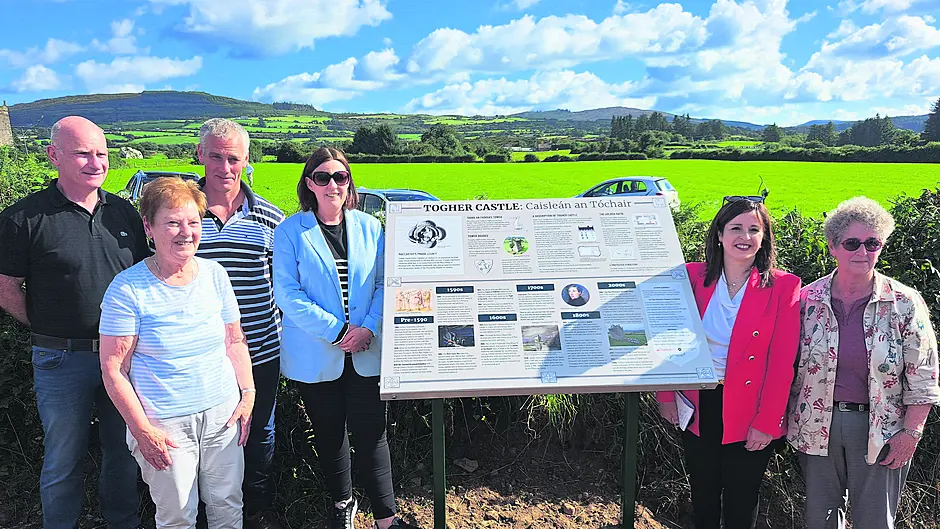TOGHER Castle has a captivating past and a new interpretive sign showcases its timeline, from the 1500s to present day, alongside vivid descriptions and imagery. The historical sign was unveiled at the 16th century tower house in Dunmanway recently, as part of Heritage Week 2023.
Togher Castle has a rich historical value due to its connection with the Mac/McCarthy Clan of Gleannacroim with the clan’s many septs involved in pivotal events of Irish history, including the Nine Years War, the Battle of Kinsale, and the Battle of the Boyne.
Furthermore, many McCarthy septs fortified their lands in 1651 due to the family involvement in the Irish Rebellion.
Togher Castle is also a protected structure which was built according to ‘The Golden Ratio’ – a geometric principle said to have been used in other well-known structures such as Notre Dame Cathedral in Paris. The sign contains a section which details the key features, design, and layout of the tower house.
The visual imagery and design are unique to this sign – with many design features and emblems recreated from various documents relating to Togher Castle, as well as the McCarthy memorial shield which was installed in the castle in the 1880s.
Along with funding from Cork County Council and the Heritage Council, the McCarthy diaspora of various families with lineage to the castle financially contributed to the sign.
A local McCarthy also assisted with the design – incorporating elements from the McCarthy collection. Visitors can learn a lot more about the castle and about the clan by reading the detailed sign which has now been installed at the castle, situated at Togher, outside the town of Dunmanway.









